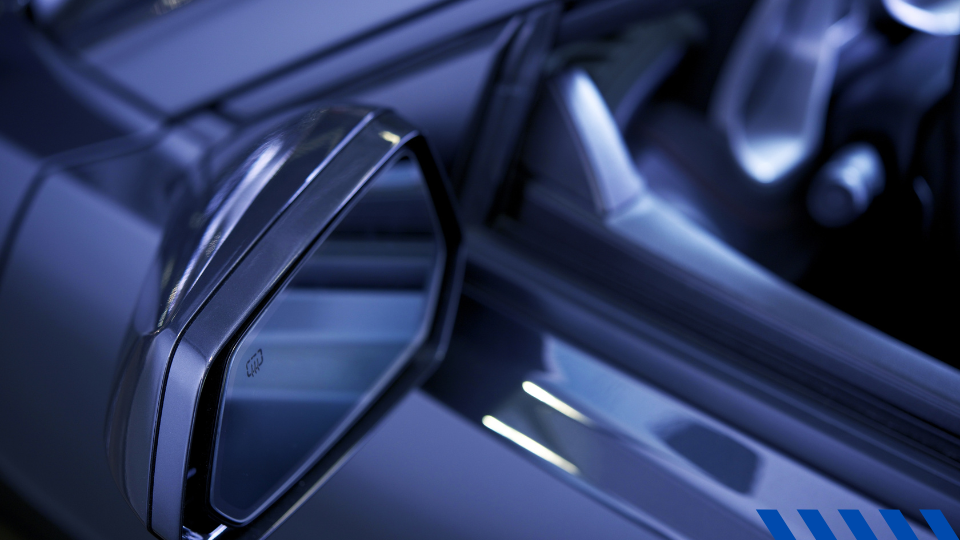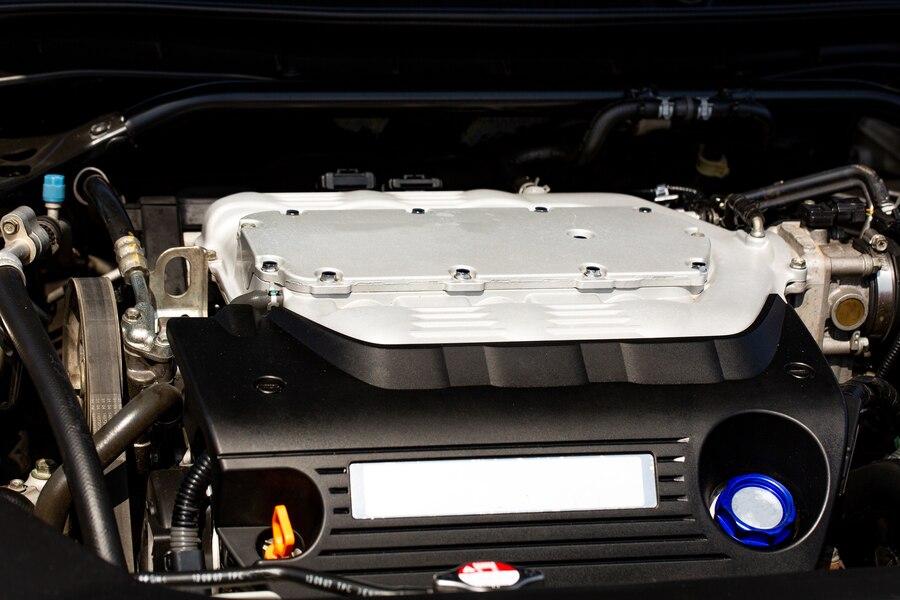Auto-dimming mirrors, also known as electrochromic mirrors, are a type of rearview mirror that automatically dims in response to bright headlights. This technology was first introduced in the 1980s by Gentex Corporation and has since become a popular feature in many vehicles.
How do auto-dimming mirrors work?
Auto-dimming mirrors use sensors to detect light levels and adjust the tint of the mirror accordingly. Typically, the mirror contains two layers of glass with a layer of gel sandwiched between them. This gel can be electronically charged to change its opacity or transparency.
When bright lights from behind hit the mirror, sensors located on the front of the mirror detect this and send an electrical current to the gel. This causes the gel to darken and reduce the amount of light reflected in the mirror, thus reducing glare for the driver.
Benefits of Auto-Dimming Mirrors
These mirrors provide several advantages to drivers. They enhance safety by reducing glare from headlights, allowing for a clearer view of the road behind. This feature helps minimize eye strain during night driving. Many drivers appreciate the automatic adjustment, which means they do not need to manually flip the mirror.
Additionally, these mirrors add a modern touch to a vehicle’s interior. They are especially popular in luxury cars and high-tech models. For those seeking to understand this technology better, searching for Tesla mechanics near me can yield knowledgeable professionals who can explain the benefits in detail.
Common Features
Auto-dimming mirrors often come with various additional features to enhance user experience. Many models include built-in displays that show relevant information. This can be anything from the temperature outside to the time or even navigation instructions.
Another common addition is blind-spot monitoring. This feature alerts drivers when vehicles are in their blind spots, improving safety. Some mirrors also incorporate an auto-tilt function. This allows the mirror to angle downward when the vehicle is in reverse, providing better visibility. These features make driving both easier and safer, thereby appealing to a wide range of consumers.
Types of Auto-Dimming Mirrors
There are several variations of these mirrors available in the market. They can vary based on size, shape, and additional functionalities. Some models are designed specifically for compact cars, while others fit larger vehicles.
In addition to the standard rearview models, side mirrors can also feature this technology. These options provide enhanced safety by reducing glare from vehicles alongside. As technology evolves, newer models may incorporate even more advanced features, making them increasingly popular among drivers seeking both functionality and style.
Installation Process
The installation of mirrors equipped with auto-dimming technology can be a straightforward process. It usually requires basic hand tools and a clear understanding of the vehicle’s wiring. First, the existing mirror needs to be removed along with its mounting bracket.
Next, the new mirror is mounted in the same position. Wiring for power and sensors is connected, typically to the vehicle’s electrical system. Some models may require additional setup, depending on features. It’s often recommended to consult a professional for installation to ensure proper functionality and integration with the vehicle’s systems.
Maintenance Tips
To ensure the longevity and proper function of auto-dimming mirrors, regular maintenance is essential. Clean the glass surface frequently using a soft cloth and a gentle glass cleaner. Avoid ammonia-based products, as they can damage the mirror’s coatings.
It’s also important to periodically check for any cracks or chips. If any damage is found, consider replacing the mirror. Ensure that the wiring connections remain secure and free from corrosion. This proactive approach can help maintain optimal performance and enhance safety while driving, making for a clearer view in various lighting conditions.
Comparison with Traditional Mirrors
Traditional mirrors offer a simple design without automatic adjustments. They rely on manual operation, where drivers must flip the mirror to reduce glare. This method is less convenient, especially during night driving. Users might struggle to find the right angle quickly.
In contrast, auto-dimming options enhance safety with modern technology. They adjust automatically to changing light conditions, reducing glare without driver intervention. This provides a clearer view of the road behind. As a result, drivers experience less eye strain and can focus more on the journey ahead. Such mirrors combine functionality with convenience for an improved driving experience.
Impact on Driving Safety
Driving safety is significantly enhanced with the implementation of auto-dimming technology. This system reduces glare from headlights behind the vehicle, allowing drivers to maintain a clear view of the road. By automatically adjusting to varying light conditions, it minimizes distractions.
Drivers experience less eye strain, especially during nighttime hours. This feature promotes a more focused driving experience, ultimately leading to safer travel. With reduced glare, drivers can react more swiftly to potential hazards, improving overall road safety. As more vehicles adopt this technology, it contributes to safer driving environments for everyone on the road.
Cost of Auto-Dimming Mirrors
The price of these high-tech mirrors can vary considerably. Factors influencing the cost include the complexity of the features and the model of the vehicle. Basic versions tend to be more affordable and offer essential auto-dimming functions. More advanced models may incorporate additional capabilities, such as displays or blind-spot monitoring, which can raise the price.
Installation costs should also be considered. Professional installation ensures proper setup and functionality. Customers may find that upgrading to these mirrors adds value to their vehicle. Ultimately, investing in this technology can improve driving safety and comfort for a relatively manageable expense.
Troubleshooting Common Issues
Occasionally, users may encounter issues with auto-dimming mirrors. Common problems include failure to dim properly or remaining dim when there is no glare. These issues can stem from faulty sensors or wiring malfunctions. In some cases, the mirror may simply need recalibration.
Another issue might involve the display not functioning correctly in models that have integrated screens. This can result from poor connections or software glitches, requiring a reset or professional inspection. Regularly checking connections and sensors can help mitigate these problems. Addressing any concerns quickly ensures continued optimal performance and driving safety.
To read more articles visit Bloggersworld
Conclusion
The cost of advanced vehicle mirrors varies based on features and vehicle type. Basic models are typically more budget-friendly, providing essential auto-dimming functions. In contrast, sophisticated options may come with added capabilities like displays or blind-spot detection, which can significantly increase the price.
It’s also important to factor in installation expenses. Professional installation can ensure that everything operates correctly and integrates seamlessly with the vehicle’s systems. Investing in these mirrors often enhances safety and comfort, making it a valuable addition to any vehicle despite the initial cost consideration.




